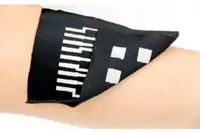Electronics News
Archive : 26 June 2015 год
 Photonics researchers at the University of California, San Diego claim they have successfully deciphered information after it travelled 12,000km through fibre optic cables equipped only with standard amplifiers. The work is said to effectively eliminate the need for regenerators along the fibre link.
Photonics researchers at the University of California, San Diego claim they have successfully deciphered information after it travelled 12,000km through fibre optic cables equipped only with standard amplifiers. The work is said to effectively eliminate the need for regenerators along the fibre link.
"With fibre optics, after a certain point, the more power you add to the signal, the more distortion you get; in effect preventing a longer reach. Our approach removes this power limit which, in turn, extends how far signals can travel without needing a repeater," said Nikola Alic, a Qualcomm Institute scientist and one of the leaders of the research.
The breakthrough relies on wideband 'frequency combs' developed by the researchers. These combs ensure that crosstalk between the information travelling through the fibre is predictable and therefore reversible at the receiving end.
"After increasing the power of the optical signals we sent by 20 times, we could still restore the original information when we used frequency combs at the outset," said Doctoral electrical engineering Eduardo Temprana, The frequency comb ensured the system did not accumulate random distortions that make it impossible to reassemble the original content.
"Crosstalk between communication channels within a fibre optic cable obeys fixed physical laws: it's not random. We now have a better understanding of the physics of crosstalk," said Professor Stojan Radic from UC San Diego. "Our approach conditions the information before it is sent, so the receiver is free of crosstalk caused by the Kerr effect."
The experiments involved three and five optical channels, which interacted with each other within silica fibre optic cables. The researchers believe their approach could be used in systems with far more channels.
Kerr Effect
The optical Kerr Effect occurs when light generated by a laser travels down a fibre, creating an electric field. This causes a variation in that fibre's index of refraction, bringing with it a range of nonlinear optical effects.
Author
Graham Pitcher
Source: www.newelectronics.co.uk
 A conductive ink developed by University of Tokyo researchers can be printed on textiles in a single step to form highly conductive and stretchable connections. The tram says the ink will enable the creation of clothing incorporating sensors for such indicators such as heart rate and muscle contraction.
A conductive ink developed by University of Tokyo researchers can be printed on textiles in a single step to form highly conductive and stretchable connections. The tram says the ink will enable the creation of clothing incorporating sensors for such indicators such as heart rate and muscle contraction.
Previous attempts to create a highly conductive and elastic ink without using a complicated multi step printing process have not been successful. However, the University of Tokyo group has developed an elastic conducting ink comprised of silver flakes, organic solvent, fluorine rubber and a fluorine surfactant. The ink exhibited high conductivity, even when stretched to more than three times its original length. This is said to represent the highest value reported for stretchable conductors.
Professor Takao Someya said: "The biggest challenge was obtaining high conductivity and stretchability with a simple one-step printing process. We were able to achieve this by use of a surfactant that allowed the silver flakes to self-assemble at the surface of the printed pattern, ensuring high conductivity."
Using the ink, the group created a wristband muscle activity sensor by printing an elastic conductor on a sportswear material and combining it with an organic transistor amplifier circuit. This sensor can measure muscle activity by detecting muscle electrical potentials over an area of 4 x 4cm, with nine electrodes placed 2cm apart in a 3x3 grid.
Author
Graham Pitcher
Source: www.newelectronics.co.uk
 A report published by the Cole Commission recognises that the Government has put in place a number of welcomed initiatives to boost the UK's export performance, but is pushing for further action. However, it notes that, if the Government is serious about exports, it needs to commit resources and, most of all, the highest possible political leadership.
A report published by the Cole Commission recognises that the Government has put in place a number of welcomed initiatives to boost the UK's export performance, but is pushing for further action. However, it notes that, if the Government is serious about exports, it needs to commit resources and, most of all, the highest possible political leadership.
The independent commission – established by erstwhile Shadow Chancellor Ed Balls – was led by Graham Cole, chairman of AgustaWestland. Its terms of reference included how to tackle the UK's continuing trade deficit and how to boost trade. Other issues included how government could better support businesses in the UK in such areas as access to finance and skills, as well as how government export schemes could be simplified and streamlined.
The report recommends that the Prime Minister immediately addresses five action areas: cabinet level leadership to drive exports; reform to the relationship between UK Export Finance (UKEF) and UK Trade and Investment (UKTI); a 'one stop shop' for export support; a public procurement strategy that brings UK SMEs into the supply chain; and getting trade and exports on the education agenda.
If the Government is serious about exports, the report contends, it needs to commit resources and, most of all, the highest possible political leadership within Cabinet and across Whitehall.
Addressing the relationship between UKEF and UKTI, the Commission said it was told consistently that UKTI and UKEF need to collaborate more effectively. 'At present', the report notes, 'the two can often appear to be at cross-purposes: UKEF too focused on its own balance sheet and big deals; and the UKTI on inputs, such as selling market intelligence reports, rather than outputs such as enhancing exports long-term. Business believes their shared goal must be to put export growth at the heart of everything they do'.
In its conclusion, the report says 'an exports led recovery lies at the heart of the new Government's economic policy. [This] Commission's role from the outset has been to support that priority by examining and reporting on what business wants from the Government towards that shared goal.
It notes 'These proposals for action are critical if we are to achieve a step change in the UK's export performance. They emerge from within business and are designed to help UK companies seize the extraordinary opportunities of the global economy'.
According to Cole, it is now for the Government to respond to this Action Plan.
Pic: Graham Cole, chairman, AgustaWestland
Author
Graham Pitcher
Source: www.newelectronics.co.uk
 Imec has announced that Toshiba and SanDisk have joined imec's industrial affiliation programme on advanced patterning. The programme tackles the challenges in bringing extreme ultraviolet lithography to high volume manufacturing. The program also develops other technologies for extending 193nm immersion lithography.
Imec has announced that Toshiba and SanDisk have joined imec's industrial affiliation programme on advanced patterning. The programme tackles the challenges in bringing extreme ultraviolet lithography to high volume manufacturing. The program also develops other technologies for extending 193nm immersion lithography.
Toshiba and SanDisk have been core partners in imec's industrial affiliation program in Advanced Memory since 2011 and, upon joining the affiliation programme; have now expanded their strategic partnership.
"This expanded agreement with Toshiba and SanDisk represents the next step in our long-term strategic and fruitful partnership. We are proud to join forces and strengthen our collective research competence in advanced patterning," said Luc Van den hove, president and ceo at imec. "The agreement is a testament of the industrial value and impact our R&D programmes have on advanced semiconductor scaling. To date, this programme, supported by our world-class infrastructure, represents the largest investment in advanced lithography equipment in the world."
Pic: Luc Van den hove, president and ceo at imec
Author
Tom Austin-Morgan
Source: www.newelectronics.co.uk
 Imec and Holst Centre are demonstrating what is claimed to be the most advanced smart garment to date at the imec Technology Forum in Brussels. The smart t-shirt features an electrocardiogram and motion sensing which monitors data such as the wearer's heart rate, activities performed and energy expenditure. The information is stored on the cloud and can be accessed via mobile devices or a PC.
Imec and Holst Centre are demonstrating what is claimed to be the most advanced smart garment to date at the imec Technology Forum in Brussels. The smart t-shirt features an electrocardiogram and motion sensing which monitors data such as the wearer's heart rate, activities performed and energy expenditure. The information is stored on the cloud and can be accessed via mobile devices or a PC.
"Smart garments have the ability to tackle a vast range of applications from fitness tracking and healthcare monitoring to safety applications. Today, on-body sensing is performed using very tight, compression garments. At imec and Holst Centre, we want to extend the functionality of smart garments and deliver medical-grade data through looser, everyday clothes," said Ruben de Francisco, programme manager, wearable health solutions, at imec and Holst Centre.
The t-shirt features flexible smart fabric interconnect technology and miniaturised electronics integrated into a module measuring 15 x 20 x 2mm and containing imec's multi-sensor data acquisition chip with embedded processing, a battery and a Bluetooth Low Energy radio chip. The module weighs 7g, and can be removed to wash the shirt or charge the battery.
"Our smart t-shirt offers the perfect platform to integrate additional capabilities such as breathing rate measurements and dehydration monitoring. And we are exploring ways to extend the functionality and feedback of the data to wearers. This can be done by integrating simple LED indicators, actuators for haptic feedback or, in the longer term, smart display technologies," added Jeroen van den Brand, program manager Integration Technologies for Flexible Systems at imec and Holst Centre.
Author
Tom Austin-Morgan
Source: www.newelectronics.co.uk

